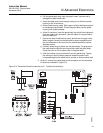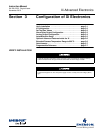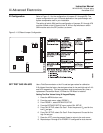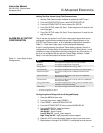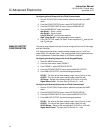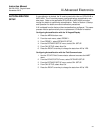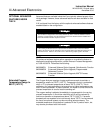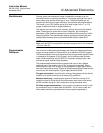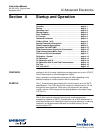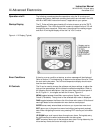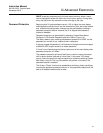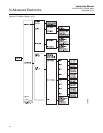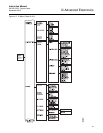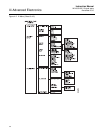
Instruction Manual
IM-106-910Xi, Original Issue
November 2010
3-7
Xi Advanced Electronics
Stoichiometer
Process upsets can sometimes cause a combustion process to go into
sub-stoichiometric or reducing conditions. The oxygen readings from one or
more probes may decline all the way to zero. The stoichiometer cell will
measure the amount of oxygen deficiency during these reducing conditions.
The trends in your DCS can be set up for a lower range limit of -1 or -2%
oxygen to depict the level of oxygen deficiency.
The operator can see if his control recovery actions are having the desired
effect. These types of events do not occur frequently, but knowing the
parameters of the situation prevents over-correcting while coming out of the
reducing condition.The stoichiometer feature requires purchasing the acid
resistant stoichiometer cell and the stoichiometer feature inside the Xi.
NOTE
Make sure the DCS is configured for the same range as the Xi. For instance:
-1% O
2
to 10% O
2
.
Programmable
Reference
The zirconium oxide sensing technology has historically measured process
oxygen by using ambient or instrument air as a reference (20.95% oxygen).
The sensor develops most of its signal at the low oxygen levels typically found
in combustion flue gasses (2-4% oxygen), and is most accurate at these
levels. When measuring near 20.95% O
2
, the sensor develops only a few
millivolts of signal, and accuracy degrades.
The programmable reference feature permits the user to use a bottled
reference gas of low oxygen value (0.4% oxygen recommended). When
measuring at or near 21% oxygen, a strong negative oxygen signal results,
with much improved accuracy. A bottle of reference gas typically lasts about a
month at the low flows required. Typical applications would be:
Flue gas recirculation - controlling the mixing of flue gasses into the burner
windbox prior ahead of the burner to reduce NO
x
emissions.
Moisture monitoring - measuring the amount of moisture coming off of
industrial dryers by noting the dilution effect water vapor has on the normal
20.95% ambient drying air. (Non-combustion drying processes only.)
Enriched oxygen concentration - pure oxygen is sometimes mixed in with
the combustion air to increase heat at the flame. This is used in steel and
other metals reduction processes and in some catalyst regenerators.



